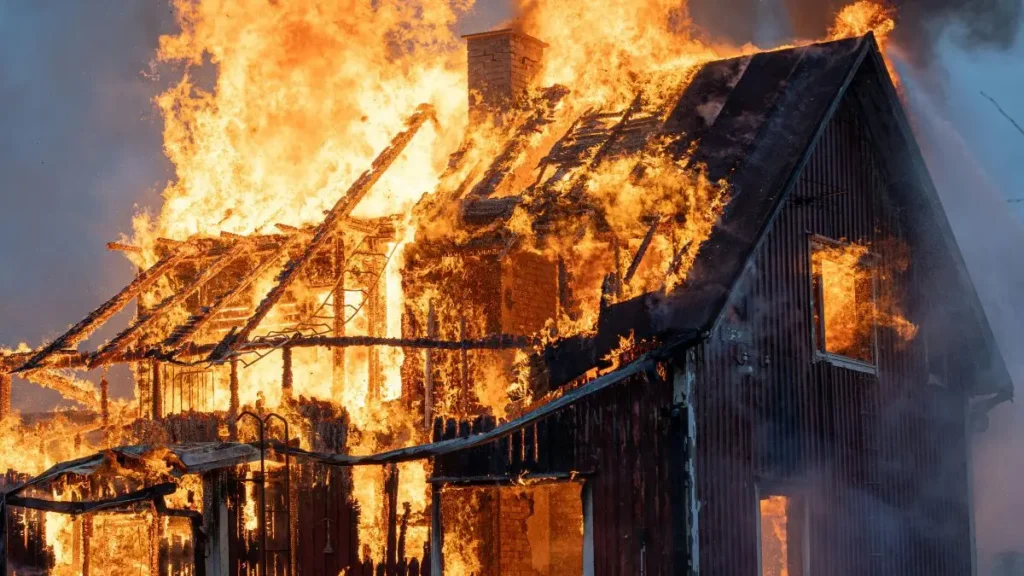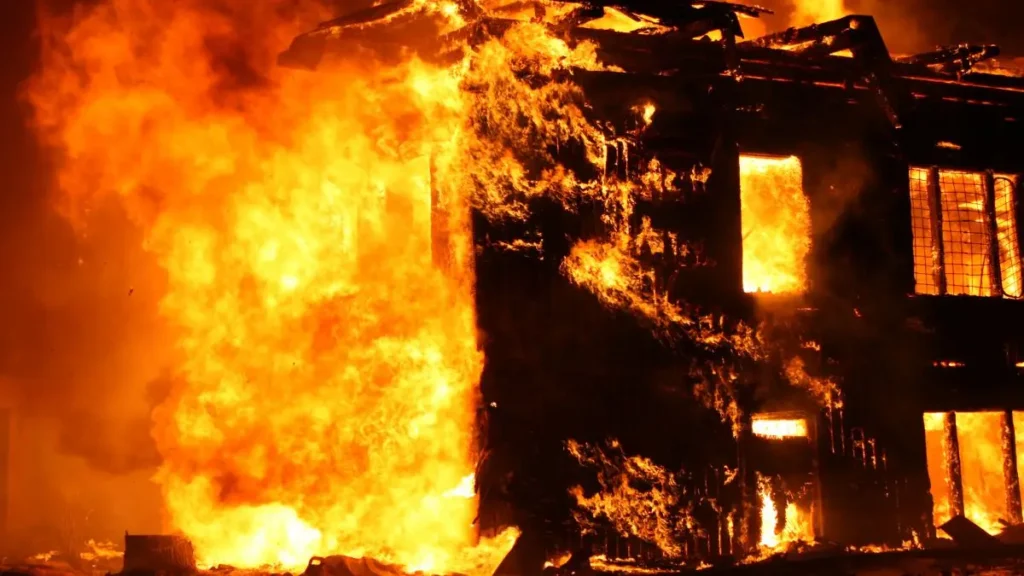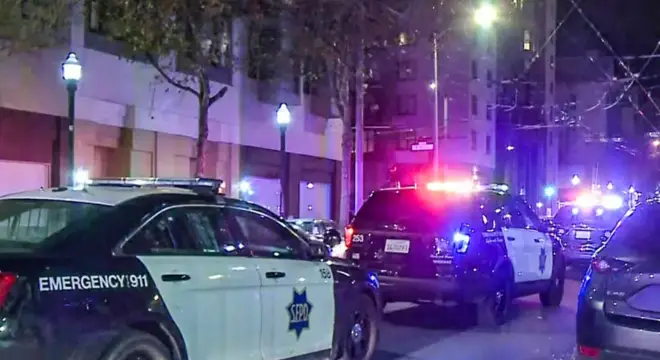Two Killed After Devastating House Fire in North Adams
When I first read about the fire on Francis Street, it hit me the way these small-town tragedies always do — quietly, but deep. Two people died inside that single-family home early Monday morning, and even though the details are still coming together, the weight of it is already clear.
A neighbor saw smoke around 7 a.m., called for help, and within minutes firefighters were forcing their way in through the basement, hoping someone inside could still be saved.
They couldn’t. By the time crews reached the two occupants, both were already gone. No one else was found in the home, and officials haven’t released their names yet. The Berkshire County D.A.’s office and the State Fire Marshal are now trying to untangle what exactly happened — not just how the fire started, but how it turned fatal so fast.
Stories like this matter because they remind all of us how fragile those early morning minutes can be. One small spark, one missed alarm, one delayed call — and everything changes.
Before we move deeper into the timeline and investigation, I want to hear your take:
When you read news like this, what’s the first question that comes to your mind — the cause, the victims, or the response?
Timeline of the Incident: What Happened Inside the Francis Street Home

The timeline of this fire is unsettling because everything unfolded so quickly. According to a report from Western Mass News, neighbors spotted smoke coming from 77 Francis Street around 7 a.m. and immediately called for help. You can imagine that moment — someone stepping outside, seeing smoke where it shouldn’t be, and realizing they don’t have a second to waste.
When firefighters got there, they saw smoke pushing out of the single-family home. A few witnesses told them people might be trapped inside, which changes everything. Those comments shift fire crews from “fight mode” to “rescue mode,” and every decision becomes a race against the clock.
Crews chose to go in through the basement, attacking the fire from below while trying to search the house at the same time. That’s a tough call; basement entry is risky. But they didn’t hesitate. And it was during that search that they found two people inside — both already deceased.
Nobody else was in the home. No signs of someone escaping. No chance to save anyone.
Moments like this remind me how fast a home can go from “normal morning” to “total loss,” and how fragile the line is between survivable and not.
Official Statements: What Authorities Have Confirmed So Far
The details coming from officials right now are limited, but they matter. WWLP confirmed through local authorities that the victims’ names haven’t been released yet — something that typically means families are still being notified or that investigators need more time before making anything public.
The Berkshire County D.A.’s Office says the Office of the Chief Medical Examiner will determine both the cause and the manner of death. And that part is important, because “how they died” and “how the fire started” aren’t always the same thing. A medical examiner’s findings can completely reshape the understanding of what happened inside those walls.
Right now, the case sits with three groups:
- North Adams Police
- The State Fire Marshal’s Office
- The Berkshire County District Attorney’s Office
They’re confirming what they can without rushing into speculation. And honestly, that’s the responsible way to handle a fatal fire — especially in a small community where everyone feels the impact.
Investigation Focus: What Police & Fire Officials Are Examining
Whenever a fire claims lives, the investigation becomes wider and more careful. And if you’re reading this, you probably want to know the same thing investigators want to know: How did this start, and why didn’t anyone get out?
In a case like this, the first thing officials will look at is the point of origin — where the fire physically began. Basement entry suggests one of two possibilities:
- The fire started low and spread upward, or
- The basement was the clearest path for rescue access.
Either way, investigators will examine electrical wiring, heating equipment, appliances, and anything that could have sparked or accelerated the flames. They’ll also check whether smoke alarms were present and working, because a missed alarm can drastically reduce survival chances, especially at 7 a.m. when most people are still waking up.
Another key question they’ll be asking: Were the victims already incapacitated before the fire grew? Carbon monoxide, smoke inhalation, or a medical emergency can all play a role.
None of the current news reports dig into this level of detail, which is exactly why it’s important to bring these angles forward. These are the questions that actually explain what happened — and what can be learned from it.
Investigators often face similar challenges in other tragic incidents, like the recent
mobile home fire in Lexington County, where understanding the point of origin became key to the entire case.
About the Home & Location: Why Fires Hit Hard in Neighborhoods Like Francis Street
If you’ve ever driven through older New England neighborhoods, you know the homes have character — and challenges. Francis Street is lined with older single-family homes, and houses built decades ago often come with aging electrical systems, tighter basements, and limited escape routes.
That doesn’t mean they’re unsafe; it just means things can escalate quickly when something goes wrong. A basement fire, for example, can fill a home with smoke long before flames ever reach the main floor. And at 7 a.m., when people are barely awake, that becomes a deadly combination.
Another thing that often gets overlooked is how early morning fires impact visibility and response. A fire discovered at night or dawn is often already advanced by the time anyone outside sees it. Even a few minutes of delay can mean the difference between heavy smoke damage and a fatal situation.
This context matters because it helps explain why this fire turned tragic so fast, not just where it happened.
Many people in the area have been relying on quick local updates through WhatsApp community alert channels, especially during winter fire months. It’s actually a helpful way to stay aware when incidents unfold before the news even arrives.
Why Early Morning House Fires Turn Deadly: What Experts Usually Point Out

Whenever I look at fatal house fires that start early in the morning, there’s a pattern that keeps showing up. Most of us are either asleep or half-awake around 7 a.m., which means the first few minutes of danger often go completely unnoticed. And in fires, those first minutes decide everything.
Experts often say that smoke, not flames, is what becomes deadly first. If the victims were sleeping or slow to react, even clean air turns toxic in seconds. And if this fire started in or near the basement, smoke would’ve pushed upward quickly, filling the house before anyone had a chance to move.
There’s also the winter factor. In colder months, people use space heaters, overloaded outlets, old wiring, and heating systems that are already doing their best. Most New England homes weren’t built for modern electrical loads, and firefighters will tell you that winter is their busiest season for a reason.
I’m not pointing fingers here — this is about understanding the reality. Fires like this aren’t always dramatic explosions. Sometimes they’re silent, creeping, and faster than any of us expect.
And when an official report eventually comes out, these are usually the kinds of things that show up between the lines.
Simple safety steps matter more than we think — as seen in the Calvert County apartment fire, where dozens of residents said a working alarm made all the difference during the evacuation.
What You Can Learn From This: Simple Fire Safety Habits That Actually Save Lives
Whenever a tragedy like this happens, I always ask myself the same question: What can someone reading this right now do to avoid being in the same situation? Not in a dramatic way — in a practical, everyday way.
Here are a few things that genuinely make a difference:
- Check your smoke alarms, not once a year but once a month. A working alarm buys you minutes, and minutes are everything.
- Look at your outlets and power strips. If you’re overloading them, fix it.
- Keep the basement and furnace areas clear. These spaces collect clutter that becomes fuel.
- Have a simple escape plan. Two exits. One meeting spot. That’s it.
- Don’t ignore light smoke or a burning smell. Calling early has saved more homes than people realize.
I know these points sound basic, but they’re the habits that fire departments talk about after every fatal incident. And if a story like this pushes even one person to take a small step toward safety, then something good came out of something awful.
We’ve seen the same pattern in other early-morning fires too, including a heartbreaking case in Pulaski where a couple didn’t survive after smoke filled their home before they even woke up.
What Happens Next: Updates We’re Still Waiting For
Right now, we’re in the part of the story where the silence feels heavy. Officials haven’t released the victims’ identities yet, and until they do, the community is left wondering who was lost in that house. The medical examiner still needs to determine the cause and manner of death, and that alone can shift the entire conversation.
We’re also waiting on a final word from investigators about how the fire started. Sometimes that comes quickly, and sometimes it takes weeks. With multiple agencies involved, they’ll want to be sure before they put anything on the record.
There may also be public updates from the city, the fire department, or even a community vigil — North Adams tends to show up when something like this happens.
If you’re following this story, this is the moment to stay tuned. The next wave of updates will answer the questions everyone is quietly asking right now.
If you want to stay updated on similar safety stories and real on-ground incidents, you can explore more reports and guides on our website Build Like New. It’s a good way to stay aware, especially during peak fire season.
Disclaimer: The details in this article are based on information released by authorities at the time of writing. Some facts may change as the investigation progresses. This coverage will be updated responsibly as new verified information becomes available.


